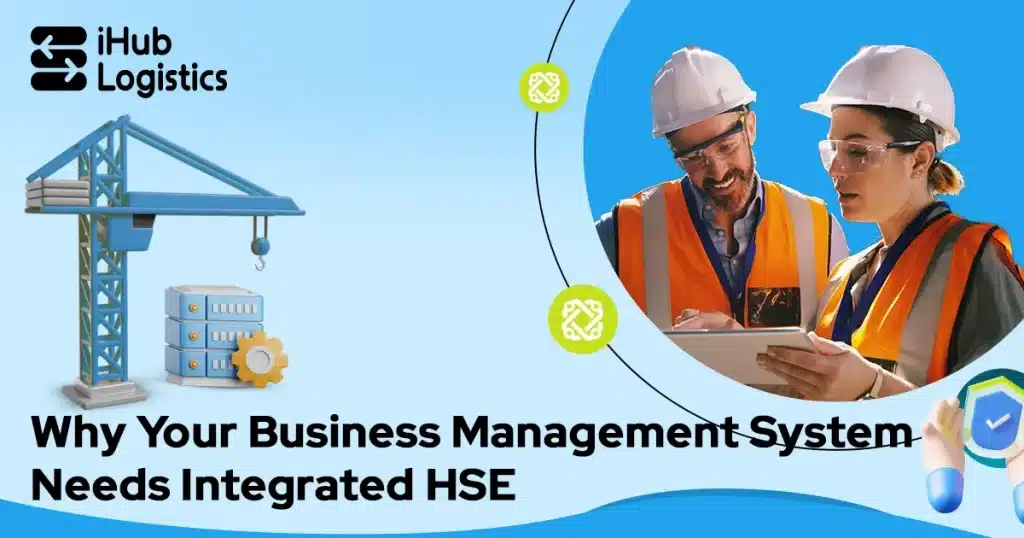
Ensuring health, safety, and environmental (HSE) standards in any business is vital for employee well-being and legal compliance. Integrating these aspects into your business management system streamlines operations, reduces the risk of legal complications, and enhances overall efficiency.
That’s why your business management system should prioritise HSE integration for smoother operations and a safer work environment.
Integrating HSE helps you keep track of everything in one place. This means fewer errors and easier access to important information. It’s not just about following rules; it’s about making your business better and safer for everyone.
Understanding HSE
HSE stands for Health, Safety, and Environment. These areas are crucial for any business that wants to succeed responsibly. Health and safety protect your team from injuries, while environmental management ensures your business activities are sustainable and eco-friendly.
HSE needs to be part of everyday business practices. It’s not just for big companies; every business, big or small, must manage these areas to avoid fines and keep operations running smoothly.
Benefits of Integration
Integrating HSE into your business management system offers numerous advantages, making your operations more efficient and safer. Here are the key benefits:
- Centralised Data Management. All HSE data is accessible in one place, simplifying data management and allowing for proactive measures.
- Cost Savings. Reduces the need for multiple systems and staff, minimising the risk of costly accidents and environmental damage.
- Improved Decision-Making. Unified HSE data provides a holistic view, facilitating quicker and more accurate decision-making.
- Enhanced Compliance and Risk Management. Simplifies compliance with legal requirements and strengthens risk management strategies.
- Operational Efficiency. Streamlined processes lead to more efficient operations and improved communication and coordination.
- Safety and Environmental Benefits. Better management of safety protocols and environmental practices reduces workplace injuries and the business’s ecological footprint.
- Scalability and Flexibility. Integrated systems can grow with your business, adapting to new requirements and incorporating additional functionalities as needed.
By integrating HSE into your business management system, you not only enhance safety and compliance but also drive overall operational excellence.
Challenges of Disintegrated Systems
Running separate systems for health, safety, and environment is hard work. Information can become scattered across different places. This makes it difficult to find what you need when you need it. Searching through multiple systems is time-consuming and frustrating. It can lead to delays in important decisions.
When systems are not integrated, mistakes are more likely to happen. Important details can be overlooked easily. This can result in serious accidents or legal problems. Miscommunication between departments is common in disintegrated systems. Different teams might have access to different information, causing confusion.
In a disintegrated setup, tracking and reporting are also challenging. Generating accurate reports requires pulling data from various sources. This process is often prone to errors. It is hard to get a clear, overall picture of your HSE performance. This can hinder your ability to improve and make informed decisions.
Moreover, maintaining separate systems is costly. You need more resources to manage and update each system. Training employees to use different platforms is also time-consuming. The lack of a unified approach can drain your business resources and impact productivity.
Integrating your systems helps avoid these risks. It centralises all information, making it easily accessible. This improves communication and reduces the chance of errors. It also simplifies reporting and decision-making processes. Overall, integration enhances efficiency, safety, and compliance.
Implementing an Integrated HSE System
To integrate HSE into your business management system, start with a plan. Determine your system needs and look for software that fits these requirements. The HSE Software Module by iHub Logistics is an excellent solution. It is user-friendly and scalable with your business growth, ensuring that Health, Safety, and Environmental considerations are central to your operations.
Training your team is crucial. They need to know how to use the new system effectively. The HSE Software Module by iHub Logistics makes this easier with its intuitive design. Ongoing training helps everyone stay updated with changes and improvements, maintaining continuous oversight and transparency in all operations.
Managing these aspects is not just about compliance; it’s about excelling in your industry. Through diligent HSE monitoring and reporting, the HSE Software Module ensures that your business stays ahead in safety and environmental standards.
Integrating the HSE Software Module into your operations means you’re setting up for success. This integration ensures that your company operates safely, efficiently, and sustainably.
